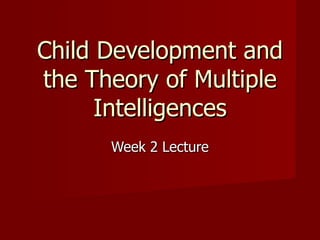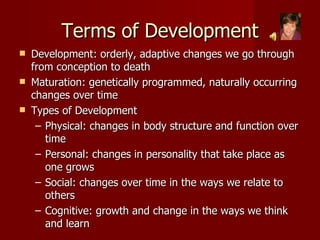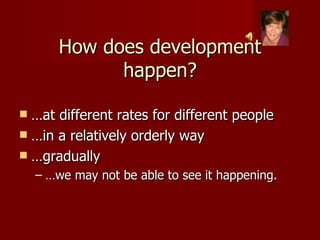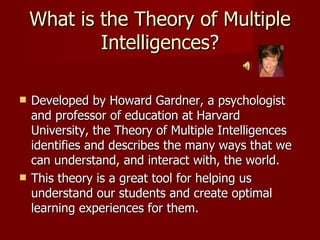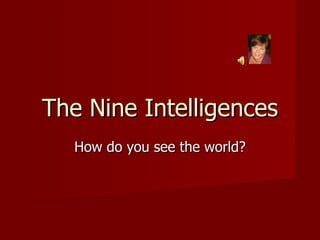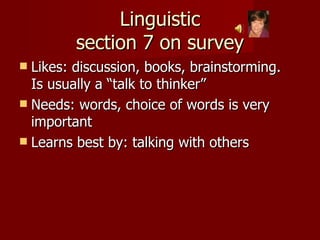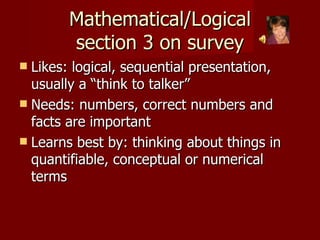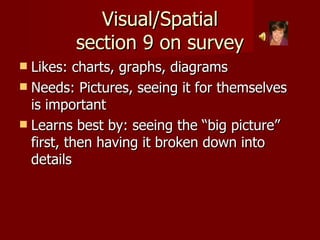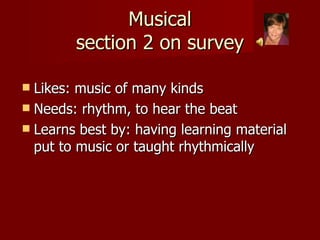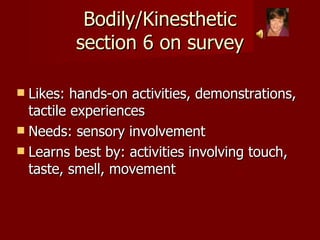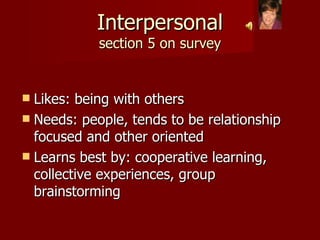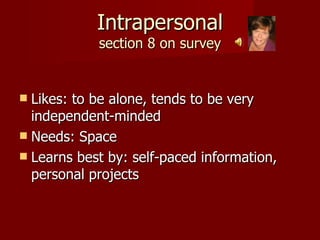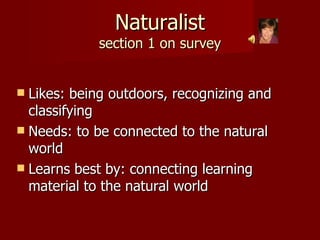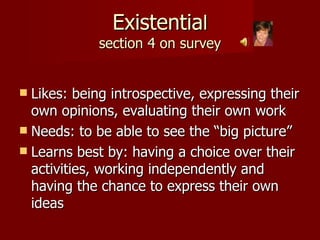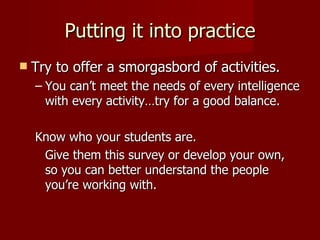The nine intelligences
- 1. Week 2 Lecture Child Development and the Theory of Multiple Intelligences
- 2. Terms of Development Development: orderly, adaptive changes we go through from conception to death Maturation: genetically programmed, naturally occurring changes over time Types of Development Physical: changes in body structure and function over time Personal: changes in personality that take place as one grows Social: changes over time in the ways we relate to others Cognitive: growth and change in the ways we think and learn
- 3. How does development happen? ŌĆ” at different rates for different people ŌĆ” in a relatively orderly way ŌĆ” gradually ŌĆ” we may not be able to see it happening.
- 4. What is the Theory of Multiple Intelligences? Developed by Howard Gardner, a psychologist and professor of education at Harvard University, the Theory of Multiple Intelligences identifies and describes the many ways that we can understand, and interact with, the world. This theory is a great tool for helping us understand our students and create optimal learning experiences for them.
- 5. The Nine Intelligences How do you see the world?
- 6. Linguistic section 7 on survey Likes: discussion, books, brainstorming. Is usually a ŌĆ£talk to thinkerŌĆØ Needs: words, choice of words is very important Learns best by: talking with others
- 7. Mathematical/Logical section 3 on survey Likes: logical, sequential presentation, usually a ŌĆ£think to talkerŌĆØ Needs: numbers, correct numbers and facts are important Learns best by: thinking about things in quantifiable, conceptual or numerical terms
- 8. Visual/Spatial section 9 on survey Likes: charts, graphs, diagrams Needs: Pictures, seeing it for themselves is important Learns best by: seeing the ŌĆ£big pictureŌĆØ first, then having it broken down into details
- 9. Musical section 2 on survey Likes: music of many kinds Needs: rhythm, to hear the beat Learns best by: having learning material put to music or taught rhythmically
- 10. Bodily/Kinesthetic section 6 on survey Likes: hands-on activities, demonstrations, tactile experiences Needs: sensory involvement Learns best by: activities involving touch, taste, smell, movement
- 11. Interpersonal section 5 on survey Likes: being with others Needs: people, tends to be relationship focused and other oriented Learns best by: cooperative learning, collective experiences, group brainstorming
- 12. Intrapersonal section 8 on survey Likes: to be alone, tends to be very independent-minded Needs: Space Learns best by: self-paced information, personal projects
- 13. Naturalist section 1 on survey Likes: being outdoors, recognizing and classifying Needs: to be connected to the natural world Learns best by: connecting learning material to the natural world
- 14. Existentia l section 4 on survey Likes: being introspective, expressing their own opinions, evaluating their own work Needs: to be able to see the ŌĆ£big pictureŌĆØ Learns best by: having a choice over their activities, working independently and having the chance to express their own ideas
- 15. Putting it into practice Try to offer a smorgasbord of activities. You canŌĆÖt meet the needs of every intelligence with every activityŌĆ”try for a good balance. Know who your students are. Give them this survey or develop your own, so you can better understand the people youŌĆÖre working with.
